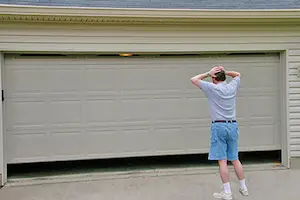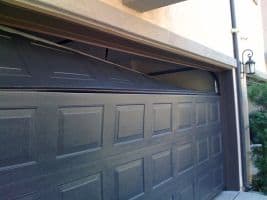How To Weatherproof Garage Door: Weatherproofing With Garage Door Seal
This post contains affiliate links.
Weatherproofing your garage door is a critical task for maintaining your garage’s integrity and comfort. How to weatherproof garage doors?
To weatherproof garage doors, you can:
- seal gaps with weatherstripping
- install insulation
- apply caulk and foam to seal cracks
- install door sweeps.
This article will guide you through the essential steps to ensure your garage remains dry, energy-efficient, and protected from the elements.
We will also cover the key strategies to fortify your garage door against harsh weather, pests, and temperature extremes, keeping your garage secure and your energy bills in check.
Inspect The Door
This step is not just about applying a new seal or weatherstrip; it’s about ensuring the foundation you’re working on is solid and intact.
Take a close look at the bottom seal and the weatherstripping along the sides and top. These areas are prone to wear and tear, and even a small gap can lead to big problems, like:
- water damage
- infestation of pests, or
- bad seal and insulation.
Inspecting the door panels is equally important. Over time, they can warp or crack, undermining your weatherproofing efforts.
Pay special attention to the garage door’s bottom edge and the threshold seal. These should form a tight seal when the door is closed, preventing any water or debris from getting inside your garage.
Don’t forget to check the condition of the weather seals around the door frame and the top of the door. If they’re cracked or brittle, they won’t provide the protection you need.
Use a flashlight to inspect every corner, and don’t hesitate to replace any part that seems compromised.
Replace Weatherstripping
Weatherstripping is a garage door’s shield against the elements. It’s that flexible seal along the bottom, top, and sides that keeps weather, pests, and dirt at bay.
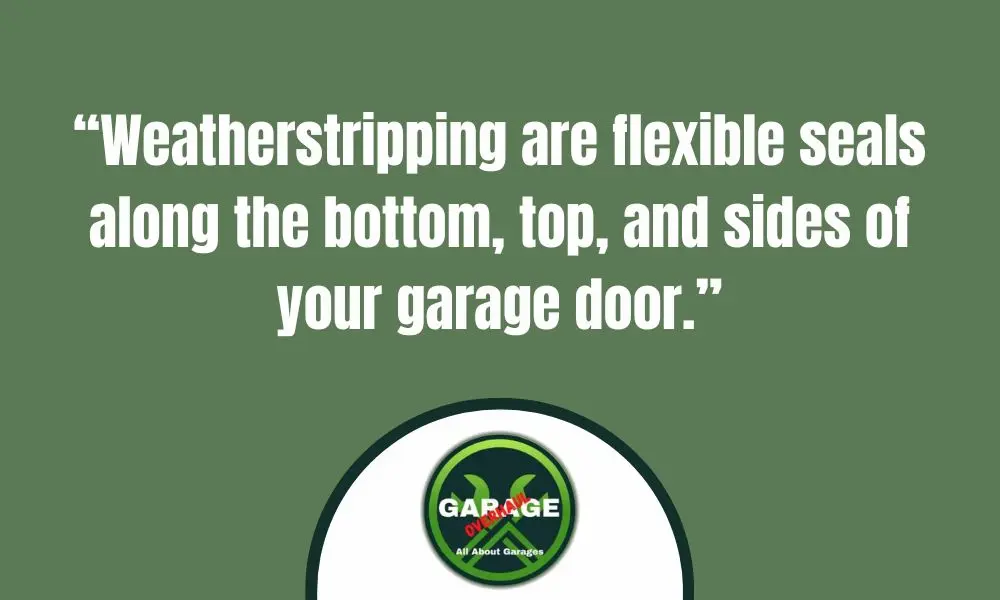
You may also know it as weather strips, and they are usually made of metals such as aluminum or bronze. Vinyl weatherstripping is also available.
When your weatherstripping wears out, you’ll notice there in your garage:
- drafts,
- moisture, and
- even unwelcome critters.
Replacing it is straightforward and can save you from bigger headaches down the road.
- First, you need to remove the old weatherstripping. For the bottom seal, this often involves loosening or removing the screws on the aluminum channel that holds the strip in place.
- Pull out the worn strip, clean the channel of any debris, and slide in the new seal (paid link).
- Some bottom seals might require you to feed them into grooves on either side of the bottom edge of the garage door.
- For the sides and top, carefully peel off the old weatherstripping, taking care not to damage the door frame.
- Clean the area to ensure the new adhesive sticks well.
- Measure and cut your new weatherstripping to fit, then press it firmly in place.
- For a tighter seal, you can use a v-shaped or brush seal, especially in areas prone to severe weather.
Remember, a well-sealed garage door not only keeps out the cold and rain but also helps in maintaining the efficiency of your garage’s heating or cooling, making this task an essential part of home maintenance.
Install A Door Sweep
A door sweep is a simple yet vital component for sealing the bottom of the garage door, ensuring a tight seal.
This is important when you weatherproof your garage door. It also blocks contaminants from entering your garage, such as:
- pests,
- dirt,
- debris, and
- water.
Over time, door sweeps can wear out or get damaged, which means you want to replace them. When selecting a new door sweep(paid link), opt for a heavy-duty, weather-resistant material like vinyl, which stands up well against the elements and frequent use.
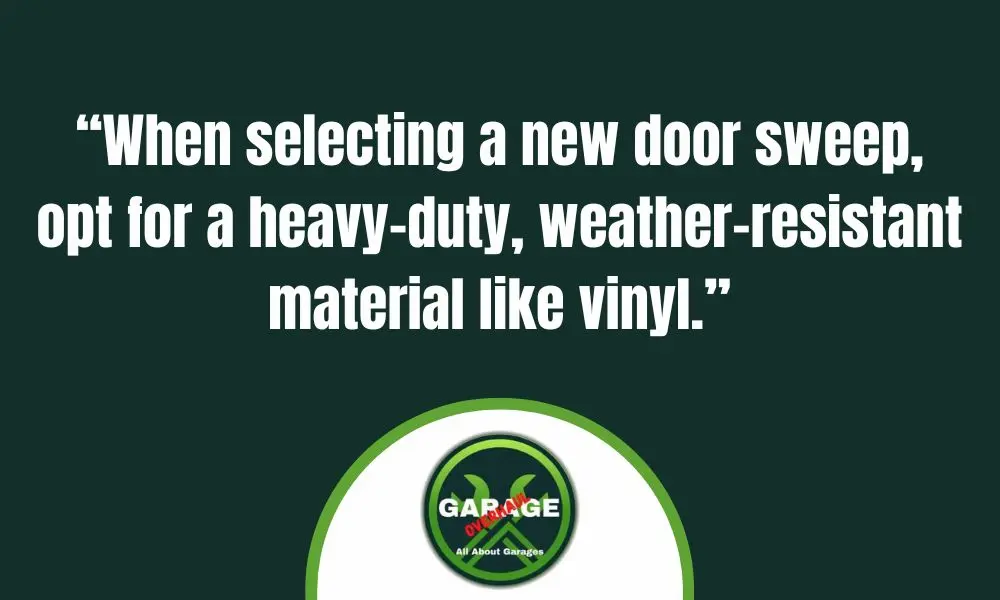
To replace a door sweep on a garage door:
- Start by removing the old one. This might involve unscrewing or gently prying it off if it’s fixed with adhesive.
- Take this opportunity to clean the area, removing any accumulated grime or remnants of the old sweep.
- The new sweep should fit the width of your door and come with pre-drilled holes or an adhesive strip for easy installation.
- Align it carefully at the bottom of the door, ensuring it creates a good seal without impeding the door’s movement.
- Secure it in place with screws or by applying the adhesive, pressing firmly to ensure a tight bond.
Replacing your sweep is a straightforward task you can do yourself, without needing to call in a professional. It’s a quick fix that significantly boosts your garage door’s weatherproofing capabilities, and protects your garage from weather, pests, and more.
Seal Gaps & Cracks With Foams Or Caulk
Using caulk and foam to weatherproof your garage door is a straightforward task that can significantly improve the inside of your garage, and protect it against the elements. It is also something you can do yourself:
- Begin by inspecting the garage door jamb and panels for any cracks or gaps. These are prime spots where air and moisture can seep through, potentially causing damage over time.
- Applying caulk is your first line of defense. Choose a weather-resistant type, ideally silicone-based, for its durability and flexibility.
- Run a bead of caulk along the edges where the garage door frame meets the garage walls, filling in any gaps.
- Smooth it out with a caulk tool or your finger, ensuring a tight seal.
If you discover larger gaps, you may need more than just caulk – consider expanding foam instead, especially if the gaps are around the garage door’s bottom and the sides. This foam expands to fill spaces, creating an effective barrier against weather and pests.
For the bottom seal, a heavy-duty weatherstrip, often made of vinyl or rubber, can be attached directly to the bottom edge of the garage door.
This strip compresses when the door is closed, creating a tight seal against the floor to prevent water, dirt, and debris from entering.
Install Insulation On Garage Door Panels
Insulation is a key component in weatherproofing your garage, especially when applied to garage door panels. It helps maintain temperature control inside your garage, so they stay warm in winter and cool in summer.
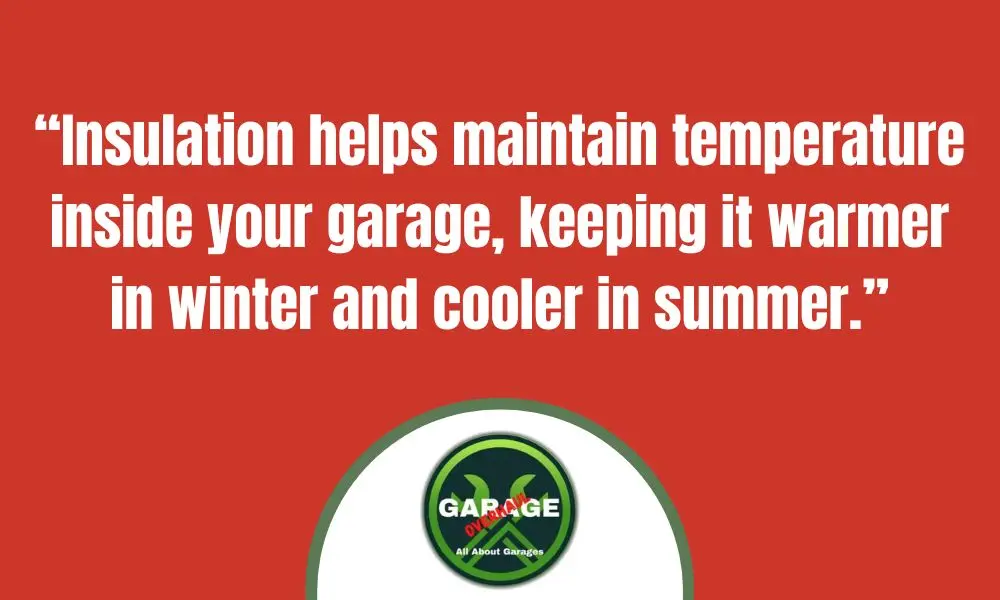
This can be crucial in protecting your car and stored items from extreme temperatures and saving on energy costs.
There are many insulation materials, each with its own R-value indicating its thermal resistance. These include:
- rigid foam boards,
- reflective insulation, or
- fiberglass batts,
To install insulation on your garage door panels:
- Measure each panel’s dimensions first. Many garage doors have recessed panels that are perfect for fitting insulation boards.
- Cut your insulation to size.
- Fit the insulation panels to your door. You may need adhesive, metal pins, or even a specialized insulation kit designed for your door type.
- For metal garage doors, reflective insulation or foam boards are often used because they are lightweight and easy to attach with adhesive tapes or retainer clips.
Remember to consider the weight of the added insulation, as it might affect the operation of your garage door opener. A professional calibration might be needed to accommodate the extra load.
Read more about installing garage door insulation here.
Regular Maintenance
Finally, remember to check on your garage door once in a while, to keep your garage door perfectly weatherproof. Without proper maintenance, even brand new garage doors will not do well.
Pay attention and inspect these parts of your garage door regularly:
- garage door threshold seal,
- garage door bottom,
- top and side seal,
- garage door insulation, and
- garage door seal strip.
Once you notice any issues, attend to them quickly. This prevents the issues from spreading, and causing bigger problems in the future.
Weatherproof Your Garage Door
Weatherproofing your garage door is an essential step in protecting your garage from the elements, and enhancing its energy efficiency.
By sealing gaps with weatherstripping, applying caulk and foam, installing a door sweep, and adding insulation to door panels, you can create a robust barrier against weather, pests, and temperature fluctuations.
These measures not only safeguard your belongings but also contribute to a more comfortable and cost-effective home environment.

